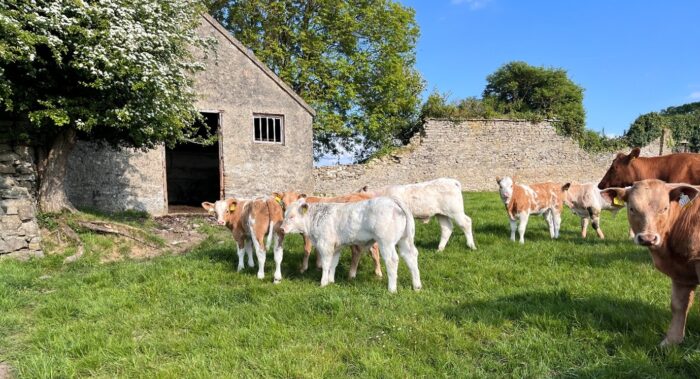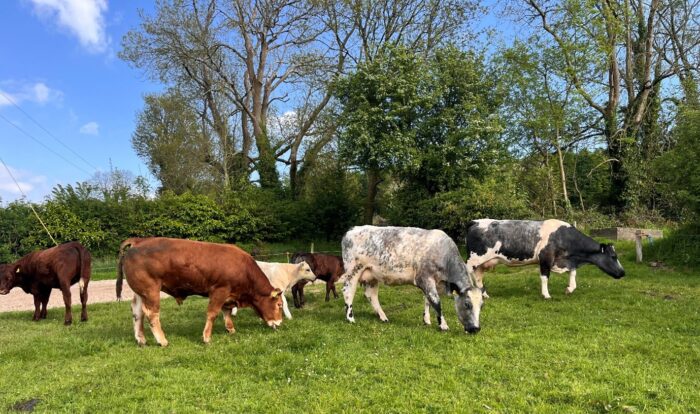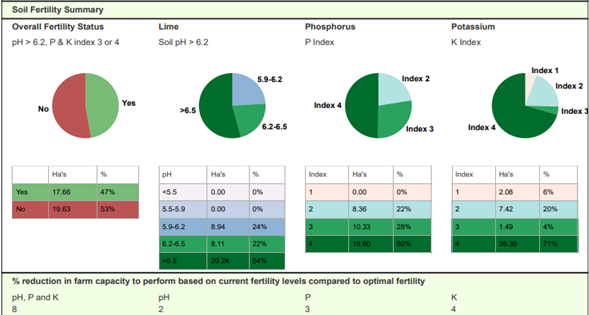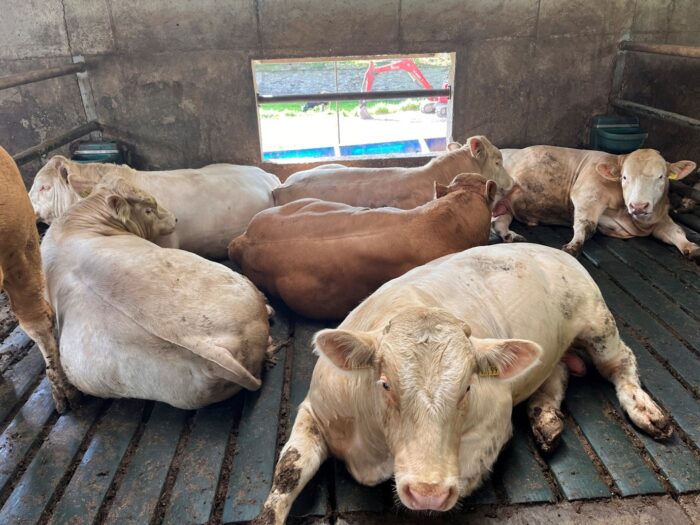Calving and Breeding
Calving is complete, breeding is on track, careful herd management supports fertility and efficient grass use.
Calving has now finished here in Kilmoganny. It was a mixed season – calves were born healthy and strong, but a few picked up scour at grass. Following a veterinary investigation, coccidiosis was identified as the likely cause. All affected calves have since been treated and have made a full recovery.

This years calves, recovered from coccidiosis.
The breeding season is well underway. The Charolais bull was turned out on 5th April, followed by the Limousin bull on 20th April. I have seen very few repeats in the last fortnight and so I pulled the bulls on June 17th. This should result in calving finishing by the end of March next spring, this is important for me to make the best use of grass, have heavier bulls at housing to minimise expensive feed and have the bulls finished early.
One of the bulls went slightly lame, so the vet was called. He administered an anti-inflammatory and an antibiotic. My main concern was preventing infection and a rise in temperature, which could cause temporary infertility.
This year, I grouped the first-time calvers with the maiden heifers. They received priority access to grass throughout spring and are now in excellent condition going to the bull. This level of management is vital for heifers calving down at 24 months to ensure they go back in calf. All calves are allowed to forward creep graze from day one, this reduces the bond with the dam and also reduces the demand on the her, now at 3.5 months old, they are consuming a substantial amount of grass
I will scan late July/early august and anything not in calf will go in with the finishing heifers.

First calvers out with maiden heifers on Ruairi Cummins Farm – Kilmoganny
After recent rainfall, I noticed coughing in the calves and decided to dose them for lungworm. I usually don’t need to dose for worms until September – based on faecal egg counts – but lungworm is different. Lungworms develop into adults in the lungs before laying eggs, so by the time eggs appear in faeces, lung damage may already be significant.
Calves are vaccinated early with an intranasal product for RSV and Pi3 viruses, along with IBR and a clostridial vaccine covering ten strains. Bought-in continental-sired calves from the dairy herd are also put on the same vaccination protocol as my own stock.
Soil samples were taken at the end of 2024, and I was pleased to see a significant improvement – a return on the investment made in recent years. Some fields still require lime, phosphorus (P), and potassium (K), but overall progress is very encouraging.
A new Nutrient Management Plan (NMP) has been prepared, and the updated colour-coded maps are excellent – a very visual way of showing the indices of each field. On the out-farm, some fields are Index 1 and 2 for potassium, so I plan to apply a bag of muriate of potash per acre. At home, plots with low P and K are getting 13-6-20 to help bring up both nutrient levels.
In a year where there might be some surplus cash, investing in soil fertility seems like a wise choice.

First cut silage has been harvested, yielding approximately eight bales per acre – including the red clover silage ground. The non clover ground received two bags of 13-6-20 and one bag of urea per acre. The red clover silage got 3,000 gallons of slurry per avre and one bag of 13-6-20. I don’t wasn to use too much chemical fertiliser and it will affect it persistenct. I have slurry saved for the second cut and it will revecive 2,500- 3,000 gallons.
Twenty acres have been closed for second cut, which has been treated with 2,500 gallons of slurry, a bag of 13-6-20, and one and a half bags of ProUrea 38% + S.
My fodder requirement for an average winter is around 400 bales. I carried over 100 bales from last year and cut 175 in the first cut. I only need 125 more, which I will easily achieve from the second cut. I also plan to cut hay from the out-farm to feed over-conditioned cows when they come in for winter.
The last of the bulls have been slaughtered, and I’m very happy with their performance. They averaged 15.0 months of age, with an average carcass weight of 392 kg and graded U-3-.
Performance has improved steadily over recent years, which I attribute to increased milk from cows, the quality of the stock bulls, and good management. The sire was Knockmahon Noble – a Charolais bull with a terminal index of €111, carcass weight of +29 kg, and a conformation score of 1.81. He was easy calving at 3.2% on cows, though higher at 8.3% on heifers.
My new bull, Knockmahon Tex, also comes from the same herd. He has a terminal index of €175, carcass weight of +39.5 kg, and a conformation score of 2.18. He is even easier calving at 2.8% and carries the F94L myostatin gene – offering a balance of calving ease and muscle.
Bulls are allowed to creep graze ahead of the cows year-round and are fed concentrates before and after weaning to avoid any setback. This approach also helps achieve adequate fat cover by 15 months. They are vaccinated against pneumonia and dosed by weight at housing for both gut and lungworms.

Finishing bulls on Ruairi Cummins Farm